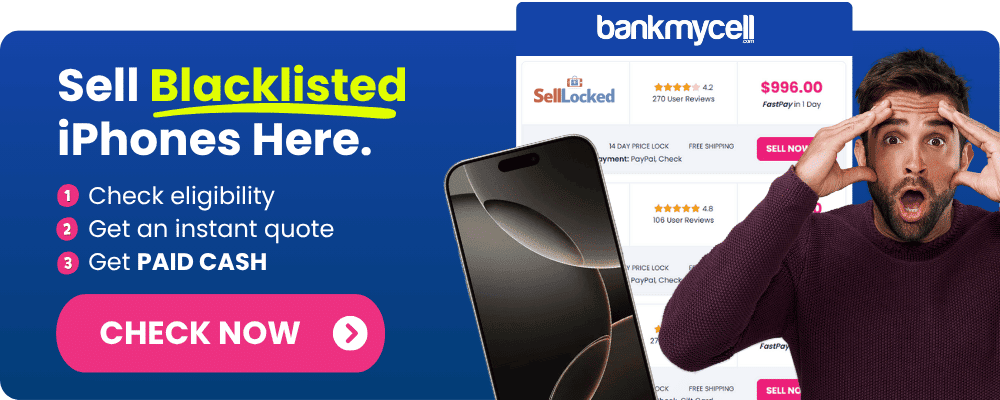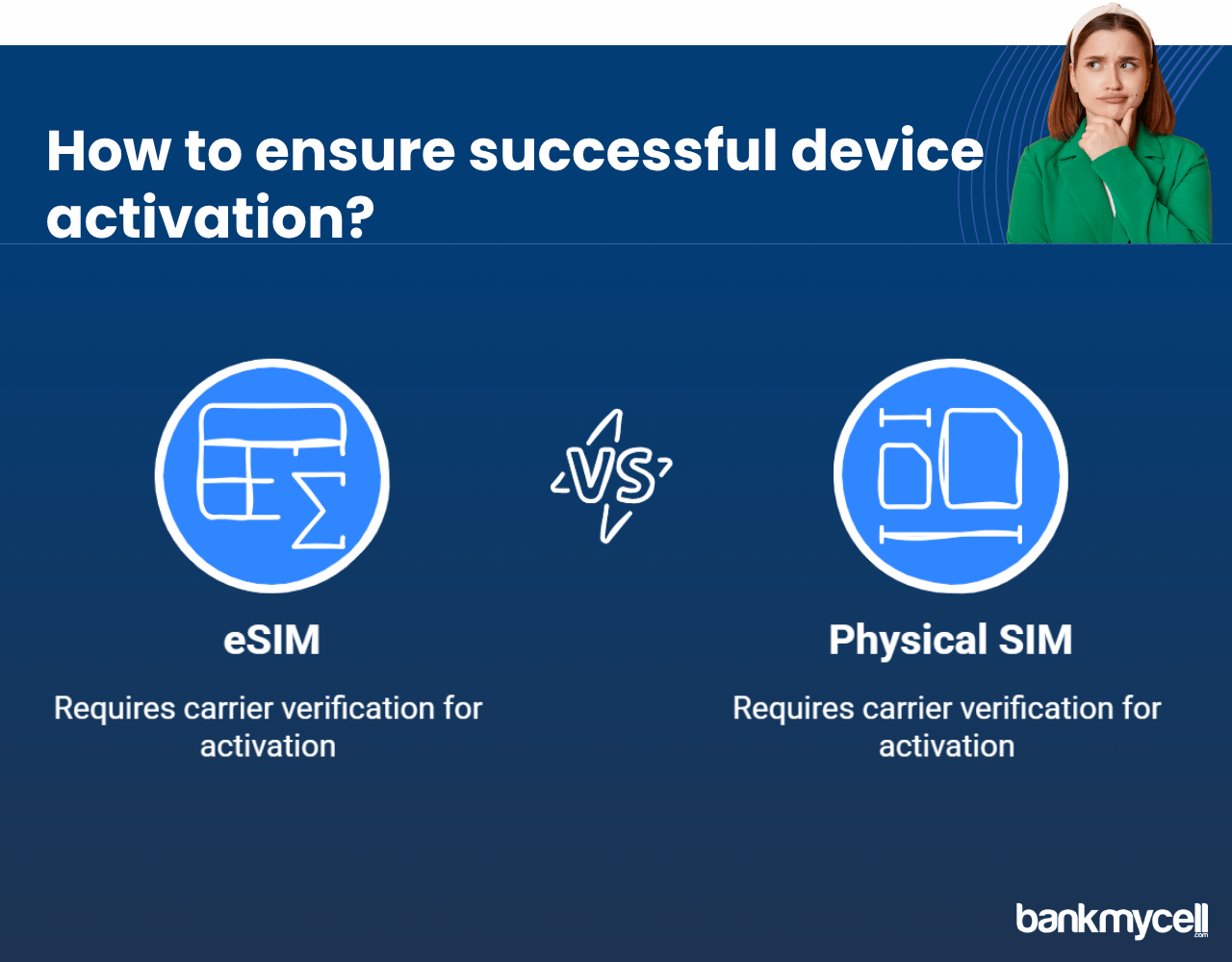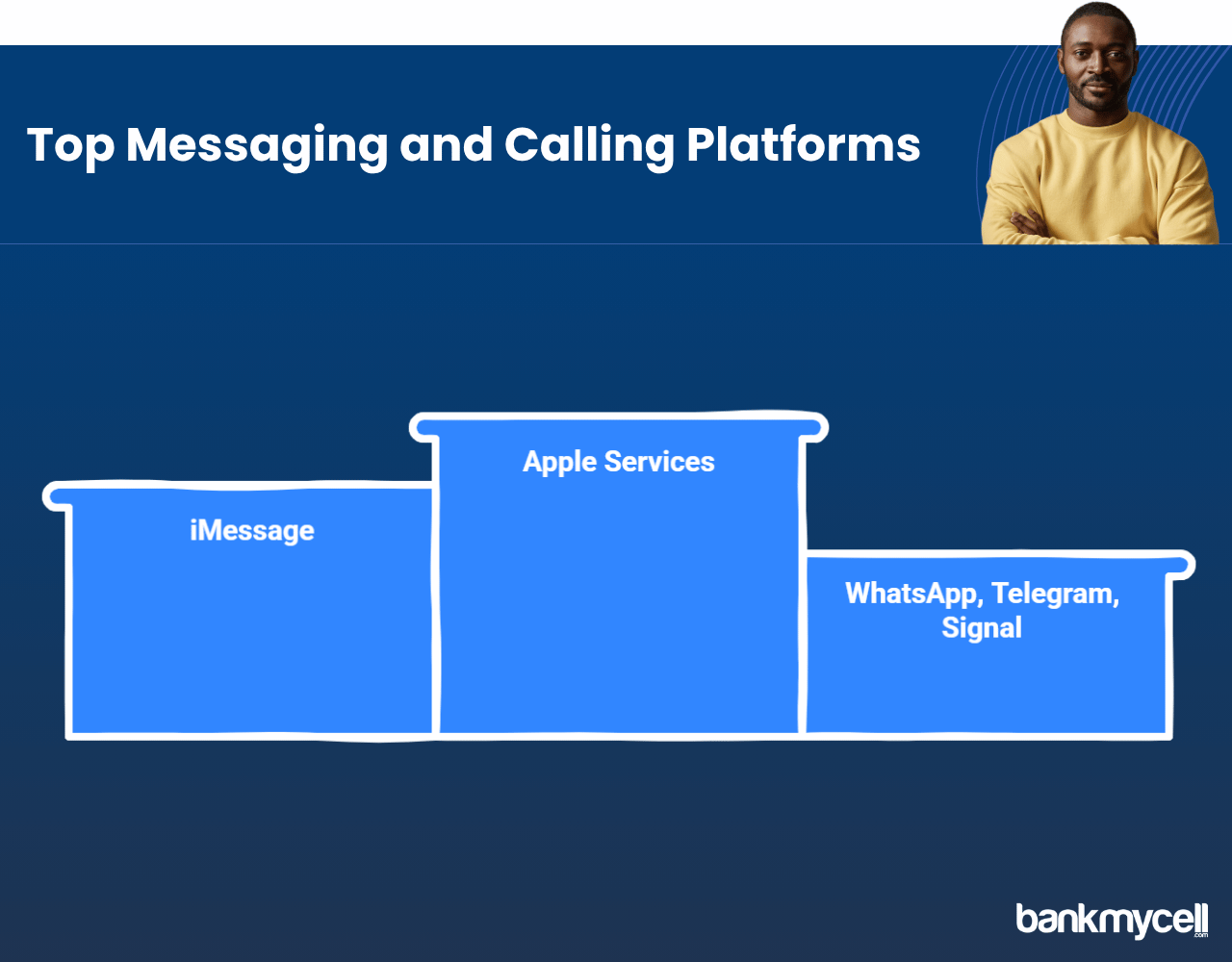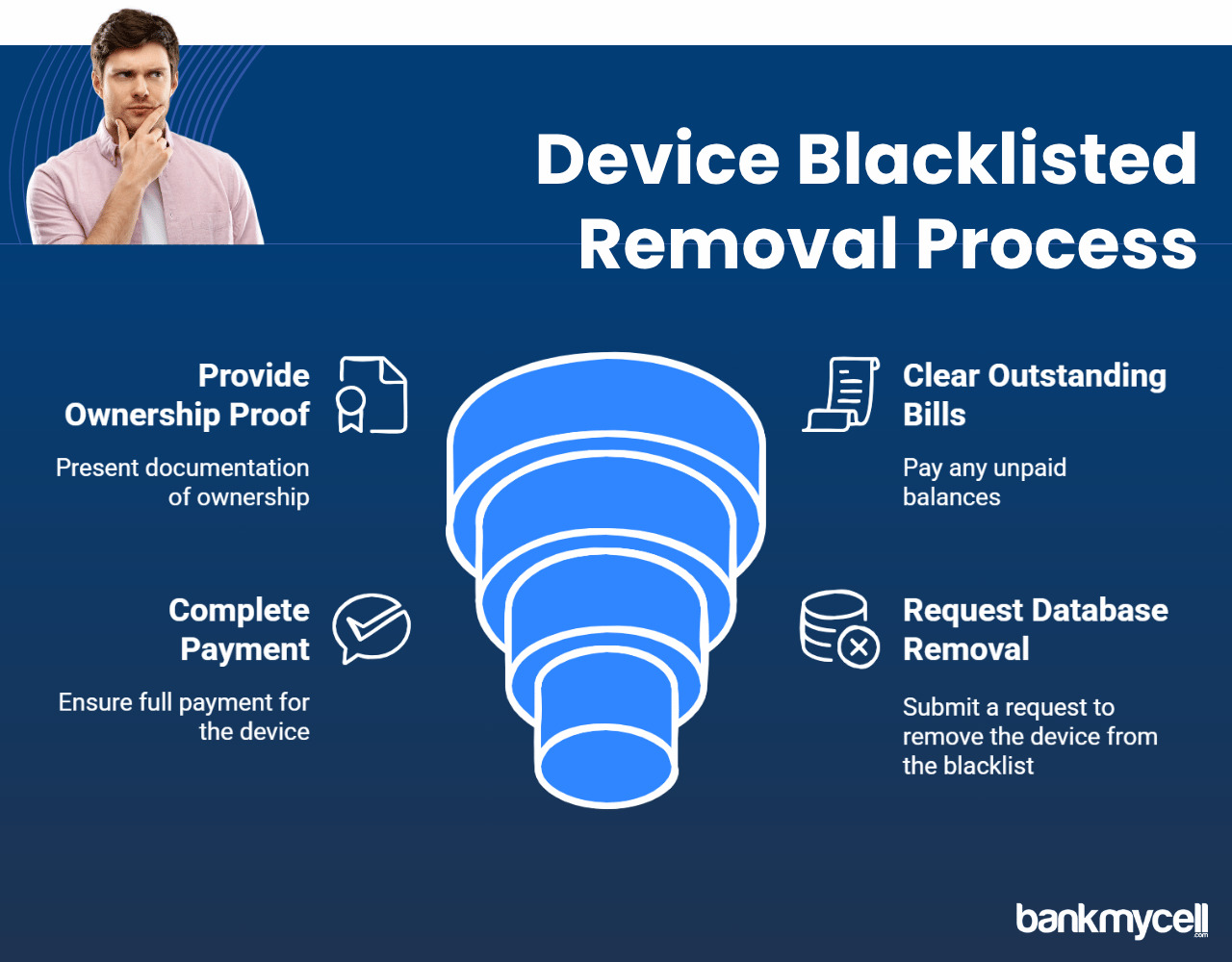Does eSIM Work on Blacklisted Phones? The Complete iPhone Guide
60-Second Summary
eSIM will not work on a blacklisted phone (even on an iPhone). When a device is blacklisted, the ban is registered at the device level using its unique IMEI number, preventing both a physical SIM card and an eSIM from accessing the carrier’s network.
eSIM Not Working On Blacklisted Devices: The Reasons Why
Carrier Blocks at Device Level, Not SIM Level:
- Blacklisting associates the IMEI number with a carrier’s internal database
- Any SIM (physical or eSIM) will be blocked during carrier authentication
- eSIM is affected by blacklisting just as a physical SIM card is.
- Blacklisting is cross-carrier for eSIM. So, even International eSIMs won’t work on a blacklisted device.
What Works On Blacklisted iPhone
Limited Wi-Fi Use:
- Wi-Fi web browsing and app downloading from Apple Store
- FaceTime, iMessage, WhatsApp, and other apps that use internet data
- Wi-Fi video streaming and social media apps
- No cellular data, calls, or text messaging
Legal Methods to Resolve Blacklisting Issue
3 Legal Methods:
- Contact Carrier: Resolve blacklisting by providing proof of ownership and settling any outstanding bills
- Ask for a Refund: If the blacklisted device was purchased recently, contact the seller
- Use On Wi-Fi Only: Use the blacklisted iPhone only on Wi-Fi networks with limited functionality
Bottom Line: Carrier resolution is the only legal solution. There is no eSIM fix to blacklist as security is always a priority to combat phone theft and fraud. BankMyCell’s special buyback program is a viable option for selling your blacklisted iPhone if carrier resolution is not available—they buy blacklisted iPhones and provide a secure transaction process for a legal owner.
Alternative Solution: Can’t get the blacklisting resolved or is the cost of resolution too expensive? BankMyCell buys blacklisted iPhones from legal owners. Sell your blacklisted iPhone online with full transaction security through BankMyCell. Compare competitive buyback offers from verified shops and get free shipping. Turn your blacklisted iPhone into cash that you can use towards an unlocked iPhone instead of an outdated iPhone stuck with limited functionality.
Disclaimer: You can sell blacklisted iPhones as long as you’re the legal owner. For example, if you bought the iPhone from a store or a person and it’s not found or stolen, you can sell it. If you’re unsure, check with the store you choose, and they will guide you.
| TODAY'S BEST LOCKED iPHONE BUYBACK OFFERS | |||
|---|---|---|---|
| Device | Blacklisted | ||
| iPhone 16e | $360.00 | Compare | |
| iPhone 16 Pro Max | $1045.00 | Compare | |
| iPhone 16 Pro | $870.00 | Compare | |
| iPhone 16 Plus | $420.00 | Compare | |
| iPhone 16 | $395.00 | Compare | |
| iPhone 15 Pro Max | $730.00 | Compare | |
| iPhone 15 Pro | $650.00 | Compare | |
| iPhone 15 Plus | $335.00 | Compare | |
| iPhone 15 | $345.00 | Compare | |
| iPhone 14 Pro Max | $570.00 | Compare | |
| iPhone 14 Pro | $400.00 | Compare | |
| iPhone 14 Plus | $265.00 | Compare | |
| iPhone 14 | $235.00 | Compare | |
| iPhone 13 Pro Max | $280.00 | Compare | |
| iPhone 13 Pro | $220.00 | Compare | |
| iPhone 13 Mini | $115.00 | Compare | |
| iPhone 13 | $140.00 | Compare | |
| iPhone 12 Pro Max | $150.00 | Compare | |
| iPhone 12 Pro | $140.00 | Compare | |
| iPhone 12 Mini | $115.00 | Compare | |
| iPhone 12 | $100.00 | Compare | |
| iPhone 11 Pro Max | $115.00 | Compare | |
| iPhone 11 Pro | $115.00 | Compare | |
| iPhone 11 | $105.00 | Compare | |
| * Best market prices updated December 26th 2025 | |||

Data Source: BankMyCell compares over 100,000+ quotes and customer reviews from 20+ trusted buyback stores every 15 minutes via our data feeds, making us America’s #1 time-saving trade-in supermarket.
You may question whether an eSIM functions on blacklisted iPhones or any blacklisted phone.
Users who find themselves with a blacklisted used iPhone or whose own device was blacklisted because of loss, theft, or unpaid bills may look to eSIM technology as a potential solution to preserve network connection.
Here’s the problem:
When iPhones are blacklisted their IMEI numbers are recorded in a worldwide database managed by carriers and mobile operators which prevents them from working properly on cellular networks.
And that’s not all…
Most individuals incorrectly understand how eSIMs function with blacklisted devices and consequently spend money on ineffective solutions for phones blocked by their carrier.
What Happens When an iPhone Gets Blacklisted? Understanding IMEI Blacklisting
Blacklisting occurs when an iPhone gets lost or stolen or when there are unpaid financial responsibilities associated with the device. As soon as an incident occurs, mobile operators integrate the device’s individual IMEI number (International Mobile Equipment Identity) into a shared blacklist database which carriers can access.
This means:
- The carrier lock prevents the device from connecting to any cellular network.
- The blacklisting affects the whole device instead of only one SIM card or physical SIM slot.
- Every major carrier along with smaller carriers usually implement this restriction.
- In numerous situations blacklisting affects devices on an international scale by limiting network connectivity.
Think about it
The blacklisting system functions as a protective security measure that both prevents theft and safeguards consumers from fraudulent transactions. The blacklist protection would become ineffective for stolen or lost devices if switching to an eSIM could bypass this security measure.
Wondering how to sell your blacklisted iPhone with blacklist restriction problems? The website www.bankmycell.com/sell/iphones assists you in exploring your selling options while maximizing value for devices with blacklisted IMEI numbers.
How eSIM Technology Works on iPhones
On iPhones eSIM technology functions differently than physical SIM cards by providing a digital method to activate cellular plans directly through internal hardware.
eSIM (embedded SIM) serves as a digital substitute for the physical SIM card which enables cellular plan activation without traditional SIM cards. Apple started supporting eSIM technology with the iPhone XS alongside both the iPhone XS Max and iPhone XR models.
This explanation covers the standard operation of eSIM technology on unlocked iPhones.
- The iPhone’s eSIM technology integrates directly with the device’s hardware instead of using a detachable physical SIM card.
- Your device can hold several eSIM profiles at once which operates the same way dual SIM functionality works
- Digital activation of eSIM profiles takes place through carrier applications or scanning QR codes.
- Network carrier changes are possible without needing to swap physical SIM cards.
eSIM functionality requires the device to connect to cellular networks through your mobile operator but blacklisting blocks this connection because of carrier restrictions.
Why eSIM Can't Bypass Carrier Blacklisting
eSIM technology cannot circumvent the network restrictions placed on blacklisted iPhones.
The belief that eSIMs can work around iPhone blacklisting restrictions has proven incorrect. All SIM types including eSIMs face limitations due to carrier lock problems.
Device-Level Restriction, Not SIM-Level: IMEI Number Blocking
The blacklisting process targets the device through its IMEI number rather than affecting only the SIM card or SIM slot. The carrier network disables both physical SIM slots and eSIM functionality for cellular use.
The hard truth about blacklist data:
- When activating any SIM card both eSIMs and physical SIM cards require carrier verification against the device’s IMEI number.
- During the activation process for cellular plans, carriers perform a blacklist check.
- A mobile operator will reject device activation whenever the IMEI appears on a blacklist.
- All major telecommunications companies that exchange blacklist information are subject to this rule which encompasses T-Mobile along with other networks.
eSIM usage faces identical security restrictions as physical SIMs when phones appear on the blacklist.
The eSIM operates under identical security protocols to physical SIMs for blacklisted phones.
- The eSIM needs carrier verification in the same way physical SIM cards do.
- Devices that are blacklisted will be blocked by activation servers when they use blacklisted IMEI numbers.
- eSIM technology follows carrier lock security protocols and does not provide any bypass for carrier locks.
- International eSIMs usually fail to activate on devices that are blacklisted because of international roaming restrictions.
Looking for an unlocked iPhone that remains free from blacklist complications? Use BankMyCell to evaluate buyback prices from reputable stores and maximize your iPhone upgrade value.
Disclaimer: You can sell blacklisted iPhones as long as you’re the legal owner. For example, if you bought the iPhone from a store or a person and it’s not found or stolen, you can sell it. If you’re unsure, check with the store you choose, and they will guide you.
What Still Works on a Blacklisted iPhone? Wi-Fi Capabilities
A blacklisted iPhone cannot access cellular services but retains some functionality. Several features remain functional despite SIM restrictions:
Wi-Fi Connectivity for Blacklisted Devices
A blacklisted iPhone retains the ability to connect to Wi-Fi networks which enables network access independently of cellular service.
- Internet browsing
- App downloads and updates
- Email and messaging through internet-based apps
- Video streaming and social media services can work on Wi-Fi networks even if the phone lacks mobile data capabilities.
Internet-based communication apps enable blacklisted mobile devices to function without carrier services.
Blacklisted mobile devices support internet communication applications including:
- Apple services provide FaceTime for making video and audio calls
- iMessage allows Apple device users to send texts to each other without needing a cellular data plan.
- WhatsApp together with Telegram and Signal enable non-SIM messaging services.
- You can perform video conferencing through Skype and Zoom alongside similar applications without needing carrier services.
The true challenge of having a blacklisted phone is as follows:
These functions function exclusively through Wi-Fi connections. Being out of Wi-Fi range means you cannot use mobile data or make calls which reduces your device’s effectiveness as a mobile phone because of carrier lock restrictions.
Legal Methods to Resolve Blacklisting Issues
There are legitimate steps you can take to eliminate the blacklist status from your iPhone.
As the original owner of a lost or stolen iPhone
After you reported your phone as lost or stolen and then found it:
- Reach out to your carrier service provider and request to lift the blacklist designation from your device.
- Present documentation that demonstrates both ownership and full original purchase payment.
- If the device was blacklisted due to unpaid bills you must clear any outstanding balances.
- Blacklist database removal request should follow once full payment for the device is complete
If you bought an iPhone that is blacklisted and has SIM restrictions you should proceed to contact the seller to request a refund or resolution.
You purchased a device that has carrier lock problems without knowing it was blacklisted.
- Request a refund or resolution from the seller about your blacklisted IMEI number.
- When buying through a platform with buyer protection submit a claim about fraudulent activity.
- Notify local law enforcement about seller fraud if they deceived customers regarding blacklist status.
- Explore options to sell your device through specialized buyback services which handle blacklisted phones that cannot unlock.
Helpful FAQ's
Can I use an international eSIM on a blacklisted iPhone?
iPhones with blacklisted status will not activate international eSIMs. A global database that collects blacklist data from multiple countries ensures that the activation process checks IMEI status during international use.
Will factory resetting remove my iPhone from the blacklist?
The blacklist status stays on the device after a factory reset. The blacklist connects to your iPhone’s IMEI number that is permanently written into the hardware and cannot be altered through software when the phone is carrier locked.
Can I use Wi-Fi calling on a blacklisted iPhone?
Wi-Fi calling depends on an existing cellular plan from your provider which makes it unusable on blacklisted iPhones. Internet-based calling applications such as FaceTime, WhatsApp, and Skype enable phone calls over Wi-Fi without needing carrier support.
How can I check if my iPhone is blacklisted?
The blacklist status of your iPhone can be determined by reaching out to your carrier or using their online IMEI checker and third-party IMEI verification services. To locate your device’s IMEI number you can dial *#06# or navigate to Settings > General > About on your mobile device.
Is it legal to use a blacklisted iPhone on Wi-Fi?
It remains legal to use a blacklisted iPhone on Wi-Fi networks but bypassing blacklist restrictions or using stolen iPhones constitutes illegal activity. When you find out that you bought a blacklisted iPhone by mistake you should ask for an official solution instead of trying to get around the carrier lock.
Wrapping It Up
eSIM technology cannot be used to bypass restrictions on blacklisted phones. Through its IMEI number blacklisting disables any cellular connectivity function across both physical SIM slots and eSIM capabilities on all carrier networks.
Your blacklisted iPhone remains functional on Wi-Fi networks but carrier lock restrictions render it almost useless as a mobile device. The only legitimate solutions are to:
- Contact your carrier through official procedures to fix the blacklisted status of your phone.
- Operate the device exclusively with Wi-Fi connectivity and avoid using mobile data services.
- Another option includes selling your blacklisted phone to services that specialize in purchasing such devices.
- Buy an unlocked iPhone with no blacklist issues from its genuine owner.
Blacklisting circumvention efforts not only risk legal consequences but also fail because carriers and mobile operators maintain advanced security measures.





